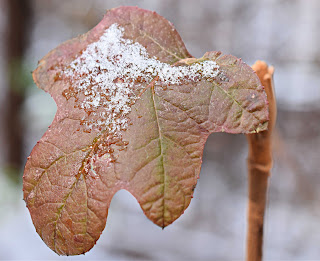Georgia celebrates Arbor Day on the third Friday in
February, but if you missed it, you can still celebrate our native trees and
plant new ones into March. Our spring rains and generally cooler weather help
trees get established before it’s too hot. I’d like to celebrate a tree that is
widespread in Georgia, adaptable to soil conditions, beneficial to wildlife,
and beautiful to humans: the red maple (Acer
rubrum).
I drove down to Florida recently and was delighted to see the abundance of red maple along the highways and county roads. Many were flowering but some were already making seeds. Both the flowers and the seeds are very beneficial to early pollinators, birds, and small mammals. As a host plant for moths and butterflies, it is 8th on this list (click here to see them all) and supports at least 285 species.
 |
| Red maple's natural range in Georgia |
In my own yard, it is flowering now and I spied a small azure butterfly flitting from flower to flower (but too fast to capture a photo!). I’ve written about this tree before from several aspects. Check out these posts and learn more:
Red Maple Takes a Chance – a post about early flowering
Parking Lot Maples – a post about the use of red maple in parking
lots (they can take those harsh conditions)
A Fall Profile: Maples – this post talks about the gorgeous
fall color of our native maples






